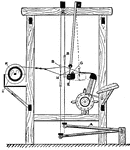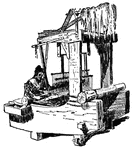Clipart tagged: ‘loom’

Dobby Motion
Cotton manufacturing. Fig. 4D, Dobby motion: The knife beam (A), rises and falls with the motion of…
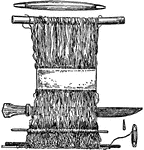
Hand Loom
An illustration of a hand loom. he earliest looms were vertical warp-weighted looms, with the warp threads…
Wire Heddle
One of the sets of vertical cords or wires in a loom, forming the principal part of the harness that…

Jacquard Machine and Harness
Originally the Jacquard machines were mechanical, and the fabric design was punched in pattern cards…

Jacquard Motion
Cotton manufacturing. Fig. 5D, Jacquard motion. The hooks are held upright by rods connected by spiral…
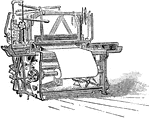
Loom
The first completely automated loom was made by Jacques Vaucanson in 1745. A different power loom was…
Shuttle Loom
Any loom that uses a shuttle. Most looms use a shuttle of some sort, however there are some shuttle-less…
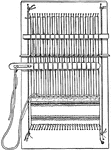
Complete pin loom
A diagram of a complete pin loom. Notice the pins holding the thread to the loom and the top and bottom.

Weaving Loom
This machine is used to weave cloth, the purpose of any loom is to hold the warp threads under tension.
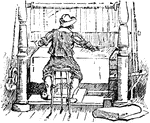
Man and Loom
An illustration of a man using a loom. A loom is a machine or device for weaving thread or yarn into…
Threaded shuttle
The shuttle is a device in which the thread is woven between the warps to create fabric.

Tappet Motion
Cotton manufacturing. Fig. 2D, tappet motion: A, B, cams on shaft C, operate the tappet levers D, E…
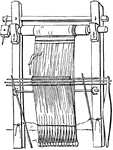
Tela
"Tela, a loom. Although weaving was among the Greeks and Romans a distinct trade, carried on by a separate…
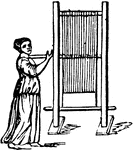
Tela
"Tela, a loom. Although weaving was among the Greeks and Romans a distinct trade, carried on by a separate…
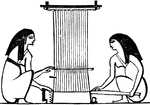
Egyptian Weaving
"The use of the spindle and loom, sewing, braiding, etc, form the subjects of many of the paintings,…
